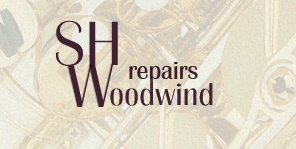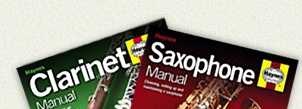
It was Mark Twain who said "Clothes make the man" - and
despite a proliferation of opposing quotes by other equally notable
people, his observation, for better or worse, still holds merit.
First impressions are everything and, as many a depping jazzer will
attest, sometimes a first impression is all you have to go on when
you're booked to make up the numbers in a scratch band. It is therefore
the wise musician who pays attention to the subject of attire, and
the following treatise should provide much valuable advice and guidance
when choosing one's dress...be it for an informal club gig or an
auditorium performance.
It has been many years since white tie and tails was the standard
dress requirement of the upstanding jazz musician. Although many
of us (myself included) mourn the passing of such sartorial elegance,
one cannot deny that it was never an especially practical outfit
- and in these egalitarian times the wearing of tails is likely
to result in your being confused for a waiter, or worse, a classical
musician...and that would simply never do.
However, it is still true to say that a musician's dress says much
about the quality of the player - and whilst functionality perhaps
takes precedence in these times, it should not do so to the detriment
of smartness.
Remember, your fellow musicians will judge your social standing
on your turnout (as you will judge theirs) - and a bad choice of
dress may well mean that not only do you not get first dibs for
the lead alto chair, you may also end up having to help the drummer
pack his kit away.
One should always bear in mind that jazz is an art form that represents
the pinnacle of expression, and what few restraints there are in
terms of the music (the breaking of which often providing entire
new sub-genres) should be countered by careful and tidy presentation
on the part of the artist - the better to accentuate the stark differences.
Indeed, a wrong note played by an elegantly attired musician will
immediately take on an air of daring experimentation - the same
note played by a scruffy oik merely remains a wrong note.
As the late Sir Charles Birdingley-Parker (a gentleman much noted
for his diligent attention to dress on stage, and much admired for
his considerable collection of jazz beards) so wittily put it when
addressing a young, somewhat ill-dressed dep who was having some
trouble with his sight-reading: "Take care of your ties, and
the ties will take care of themselves".
By far the most common dilemma regarding the choice of apparel
is how to achieve the look of 'Cultivated Cool' - de-rigueur since
Lester Young's trouser waistline reached his chin back in 1937.
A simple pair of trousers (slacks are permissible) and a shirt of
quality is really all one needs - along with the mandatory tie.
Note that bow ties require some careful consideration on the grounds
that no-one who wears such an article is likely to be taken seriously
unless they have a Nobel prize tucked away. Bass saxophonists should
ignore this advice on the grounds that they will not be taken seriously
anyway - not even if they have a Nobel prize.
The now seldom-seen Cravat is singularly interesting insomuch as
whilst it spans the whole of the jazz idiom, it only does so at
the extremes. Thus, it is acceptable, proper even, to wear one for
the playing of jazz prior to and including the Duke Ellington period
- after which it becomes gauche, and should not be seen again until
the Avant-Garde period. A notable exception is where a violinist
features in the ensemble, in which case the cravat may be worn at
one's discretion. It also doubles up as a 'bandit mask' should you
not wish to be recognised when leaving the gig.
A suit is always an excellent choice of apparel, but it is vitally
important to choose the correct jacket.
A double-breasted jacket is rarely worn these days, except by singers
- but should you choose to do so you must ensure that the lapels
are as wide as the jacket is long. Any less than this and you will
look like a spiv or a chat-show host, and may even be refused entry
to some of the more exclusive jazz clubs - even if you're on the
bill.
Choice of fabric is largely at your discretion, but a simple rule
of thumb is that the shine of your suit should not exceed that of
your horn. Players who have mistakenly bought a black lacquered
saxophone in the belief that it makes them look cool should on no
account wear tweed.
When selecting matching trousers, be mindful of the informal (in
other words, ignore at your peril) rule that equates the height
of the waistband with the skill of the player. 'Young Turks' and
fresh-faced boppers straight out of jazz school should wear their
trousers off the hip. More seasoned players may extend the line
just over the hip.
To move the waistline any higher you must have played a set with
at least one musician who has at some point either appeared on a
record or has played with someone who has done so. This will get
you halfway to your ribs - once you've been recorded yourself you
may take your waistline to your ribs.
Moving above that requires that you have been recorded by a major
jazz record label, such as Blue Note or Verve etc. If, however,
you have been recorded by ECM you may only wear a Nehru suit - the
length of the jacket being dictated by the number of times a fellow
artist has accused you of 'selling out'.
Thereafter, a waistline that extends anywhere from the chest to
the chin is wholly dependant on your relationship to the aforementioned
Lester Young and is rarely seen these days. The author has shaken
hands with Benny Carter, and so is entitled to wear a waistline
at nipple level - pending a deal with a major jazz record label,
naturally.
Be mindful too of the need to match your footwear to the height
of your waistline.
Trousers that sit just above the hip should be worn with plain Brogues;
above that, but below the ribs, patent black lace-ups (never slip-ons!)
are required. Any waistband higher than that demands Spats.
Cuban heeled boots are acceptable only if you work predominantly
in 5/4.
The Zoot Suit is occasionally still seen in formal settings -
and should only be worn after the Loyal Toast (but before the fat
lady sings), and you'd be wise to remember that it is still illegal
in some parts of the world to wear a Zoot suit if you are taller
than 5' 9". Wearing such a suit and playing a horn built anywhere
outside the 1940's is a sartorial gaffe so great that a many musicians
will refuse to play with you. You may also be taunted at great length.
Waistcoats are largely unworn these days, but can often be seen
where the band's repertoire consists of more than three numbers
whose title contains the word 'Street', 'Jelly' or 'Daddy'. By tradition,
such waistcoats are often gaudy and should be buttoned up prior
to the gig. On taking to the stage they should be unbuttoned - where
it is hoped that a jacket will render the article invisible.
For a more casual setting the polo-neck sweater remains as popular
today as it ever was - which means you may only wear one if your
name is Bill or Gerry.
Shorts of any description should never be worn unless you accompany
them with a Pith helmet.
Much can be achieved via the use of accessories, such as a hat
or a beard. You must abide by the 'Beard Rule', which
states that the length of the beard is determined by the era of
jazz you're playing and should not exceed three inches unless prior
to Be-bop. Conversely, the reverse is true for the width of a tie
post Be-bop.
In the event of being booked to play a variety of styles at a single
gig you will have to resort to using stick-on beards (unless you're
incredibly adept at growing facial hair inbetween sets).
La-Fuzz market a fine range of traditional jazz beards - the 'Lateef'
is a good all-rounder, and the 'Mulligan', although expensive, can
be worn by two people at once.
'Designer stubble' is a relative newcomer to the scene, and brings
with it its own set of rules. The fundamental principle is to ride
the fine line between studied earthiness and casual nonchalance.
Planning is essential given that the international standard for
stubble sets its length based on a percentage (8%) of the measurement
from the bottom of the lower lip to the tip of the chin. Thus in
my case, measuring some 45mm, my stubble should be 3.6mm. For the
average man this will take three days to grow. Women may find it
takes them somewhat longer.
The results of stepping outside this line is that too short a stubble
length simply makes you look like you forgot to shave, and perhaps
wash - and too long marks you down as a heavy drinker. If playing
a week's residency you will have to judge your stubble most carefully
lest you start the week looking like a numpty that no-one will listen
to, and end it looking like an oik that no-one wants to listen to.
If your stubble length as calculated exceeds 7mm you might want
to consider surgery.
Moustaches are passé these days, but are still popular with
players who use a double-embouchure and wish to hide their shame.
When it comes to hats the rule is that there are no rules. However,
nothing works with a cravat save for a beret - and a flat cap can
really only be worn as an accompaniment to a waistcoat, and then
only if the piano is out of tune. If the rim of your hat exceeds
twice the width of your head, people will assume you're either a
singer, a pimp or a harmonica player.
Sunglasses are popular with the West Coast set, but when worn
indoors are subject to the following conditions; they should not
be worn by non-smokers and those unable to play at least two diminished
scales - one of which must be in a turnaround. You cannot wear sunglasses
with spats, pumps, waistcoats or braces - unless you wish to look
like an extra from The Rocky Horror Show.
Finally, a quick word with regard to jeans. It is not my place
to dictate style, merely to comment upon what is deemed to be acceptable
given the standards of the day - but it is as safe to say now as
it ever was that jeans are most definitely not on.
Jeans are for gardening, certain forms of gambling, house-maintenance,
contemporary pig-sticking and cottaging.
It is all too easy to get it so very badly wrong, particularly
if going for the 'studiously unkempt' look - one runs the risk that
they might be thought to be, as the late Sir Charles Birdingley-Parker
so eloquently put it "Less of a bum and more of an arse".
If you've enjoyed reading this article, you might
like to hear it narrated by Clay Ryder. If so, check out his site
at jazzstreams.org
- where you'll find this article, along with others from the Jazz
Etiquette series.
|



